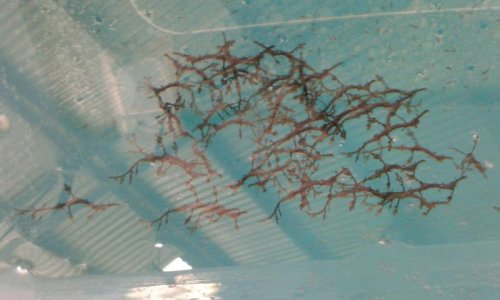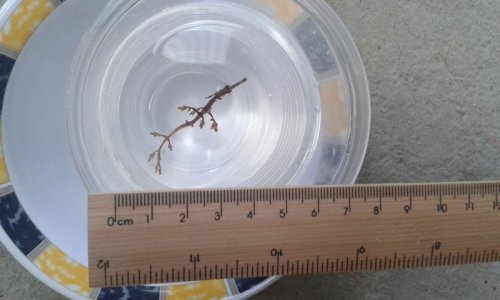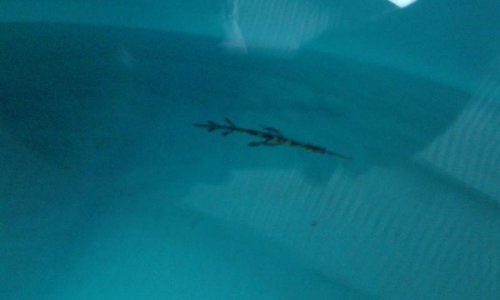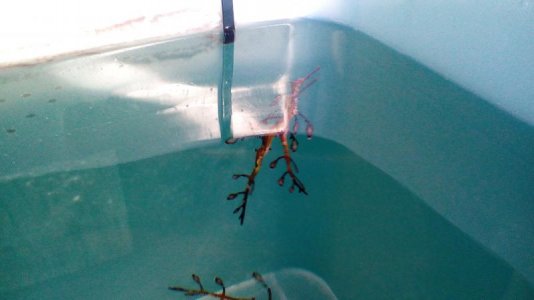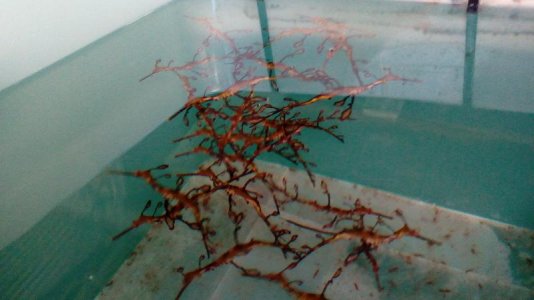Few more
Few more
The oldest are now at 60 mm and eating full size Mysis (Photo with ruler is a week old)
We have 96of them at that stage quite a few others from 2 weeks to 2 days.
Also blurry photo of one of the adults we collected 3 males and one female and plan to set up a 2 metre plus deep by 2.5 metre round to see if this can help in the courtship and hopefully successful transfer of eggs but this wont be until later in the year.
Thanks for looking
Regards Steve
Few more
The oldest are now at 60 mm and eating full size Mysis (Photo with ruler is a week old)
We have 96of them at that stage quite a few others from 2 weeks to 2 days.
Also blurry photo of one of the adults we collected 3 males and one female and plan to set up a 2 metre plus deep by 2.5 metre round to see if this can help in the courtship and hopefully successful transfer of eggs but this wont be until later in the year.
Thanks for looking
Regards Steve

